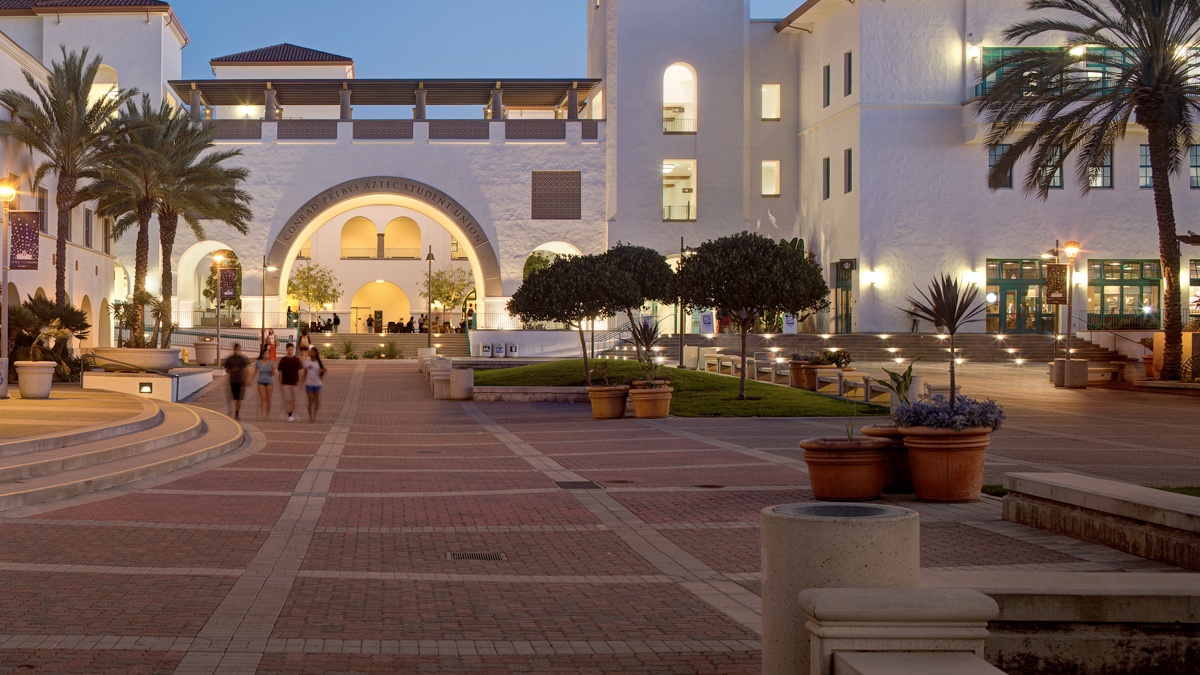Re:Border Recap: Four takeaways from the 2025 binational conference
A joint project of SDSU and Universidad Autónoma de Baja California, Re:Border was held in Mexicali for the first time under the theme “Sustainable Communities.”
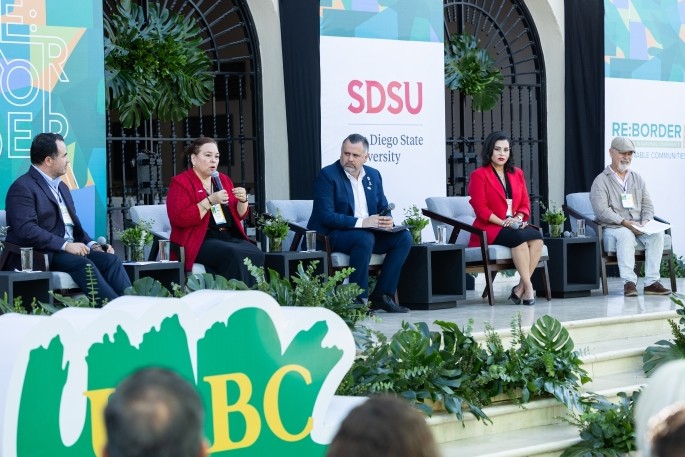
Momentum continues to build for the Re:Border Conference, which brought large crowds and dynamic dialogue to Mexicali, Mexico on Oct. 29th spotlighting key challenges and opportunities in the Cali-Baja borderlands.
About 800 people attended the binational gathering, including busloads of San Diego State University students, faculty and staff. A joint project of San Diego State University and Universidad Autónoma de Baja California, Re:Border was hosted for the first time at UABC’s Mexicali campus.
This year’s theme, “Sustainable Communities,” was inspired by proposed lithium development that has the potential to transform the Imperial County and Mexicali Binational Region.
At the opening ceremony, SDSU President Adela de la Torre praised the partnership between SDSU and UABC, citing a shared commitment to the region.
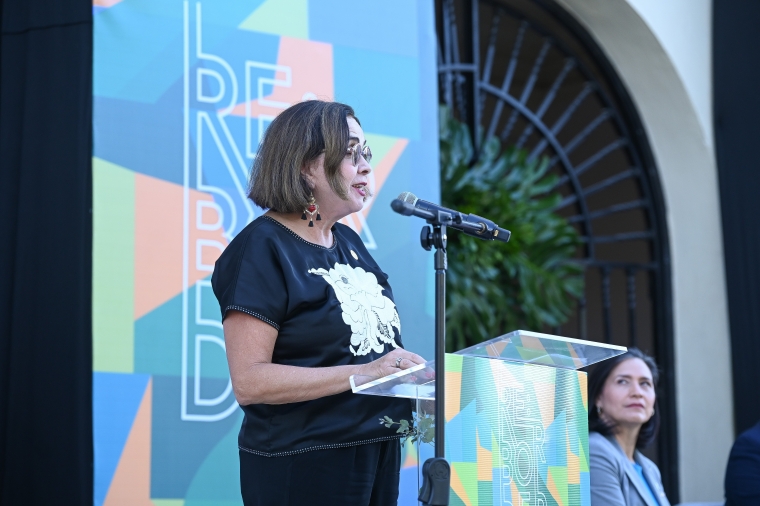 Open the image full screen.
Open the image full screen.
Looking ahead, de la Torre sees additional partnerships between SDSU and UABC, including work toward joint degree programs.
California lawmakers, led by Assembly Member David Alvarez, D-San Diego, passed legislation last year that creates a framework for California State University system schools to offer joint degrees with partner universities in Mexico.
Here are four takeaways from this year’s conference.
Focus on Sustainability
From rising temperatures to resource scarcity, Re:Border’s Sustainable Development theme resonated across the conference. During the poster session, Carolina Lopez of SDSU-Imperial Valley outlined a grant-funded project to reduce the health impacts of extreme heat exposure that disproportionately impacts rural communities.
The goal is to create a comprehensive, community-based heat action plan to manage extreme temperatures. Strategies could include targeted education campaigns and strategically located hydration stations.
 Open the image full screen.
Open the image full screen.
During panel presentations, SDSU Professor Trent Biggs showcased collaborations with UABC and other Mexican partners as part of Blue Gold initiative, which now includes 17 SDSU faculty conducting water research.
Groundwater is a key area of concern in the borderlands, said Biggs, noting that water efficiency projects in the U.S., such as lining canals with cement, have reduced recharge of groundwater aquifers in Mexico.
Additional Blue Gold research involves decentralized water treatment technologies, agricultural irrigation sensors, binational testing labs, and water pollution research.
“We have had really good success in building collaborations with people in Mexico and we are grateful for those collaborations,” said Biggs.
 Open the image full screen.
Open the image full screen.
Popular Posters
Re:Border delivered more content than ever this year, with 18 panel sessions on topics including binational education, immigration, borderlands health and wellness, and more.
Perhaps the most dynamic event, however, was the research poster session, where 45 posters filled a grand, hacienda-style courtyard in UABC’s Rectoria building.
Among those presenting poster research in Mexicali was a group of students from Del Norte High School near Rancho Bernardo. They showcased posters on home building efforts and cross-border education.
Students travel to Tecate to build houses for low-income families or families in need. They partner with a non-profit organization that supplies all the materials. Student volunteers supply the labor.
In addition, Del Norte students including Austin Zhang, Ella Huang, Claire Wang and Terri Sun spotlighted their work offering STEM tutoring and art education across the border.
“We work a lot in Tijuana with a program called Children Without Borders, where we provide opportunities to the kids there that they wouldn’t necessarily get in a normal school curriculum, " said Wang. “For example, we teach them about different cultures, humanities and arts.”
The Promise of Lithium Valley
A standing-room-only crowd came to hear an update on ambitious lithium extraction proposed in Imperial Valley. Lithium is the core component of rechargeable batteries, which are crucial for powering electric vehicles and storing energy from renewable sources like solar and wind.
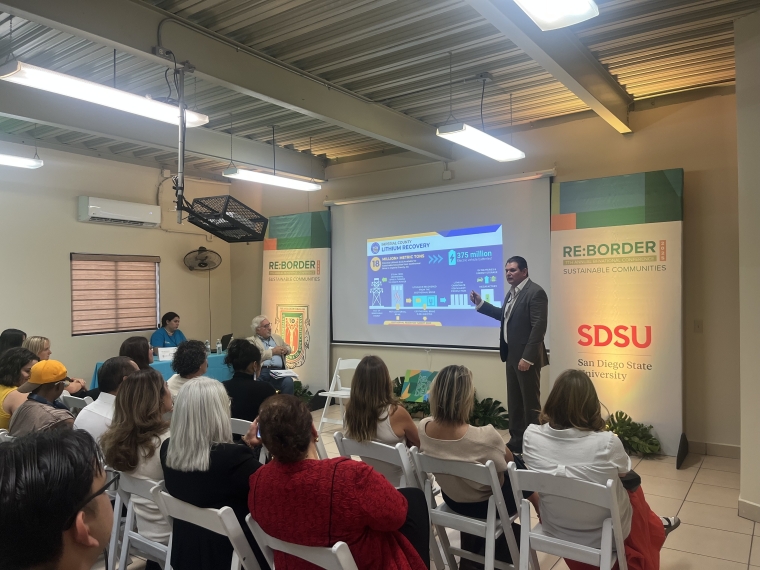 Open the image full screen.
Open the image full screen.
Brian Mooney, a consultant from RICK Engineering, spoke about the planning process leading up to development.
“When I was retained by the county, it became clear to me this is about more than lithium,” said Mooney. “It’s about creating a new employment center in an area that has been traditionally dual employment based, agriculture and education/government. There have been two employers, and now we want to diversify.”
This summer, SDSU opened a state-of- the-art sciences and engineering facility in Brawley to support the workforce demands of the geothermal energy and lithium industries.
Think Tank hits the mark
Seven binational teams competed in this year’s Think Tank, a quick-pitch contest akin to the television show “Shark Tank” where teams compete for micro-grants.
It’s one of Re:Border’s marquee events. The goal is to provide seed money to jumpstart cross-border collaborations that may blossom and attract additional grants.
This year’s winners were Transborder Healing: A Collaborative Nursing Initiative to Address Burnout and Foster Well-Being through Healing Touch. The project aims to prevent burn-out among health care providers. It was presented by SDSU School of Nursing’s Laura Angel-Zavala, Erika Rodriguez, and Stephen Jaime, as well as Leticia Gabriela Rodríguez Pedraza, director of UABC’s School of Nursing.
A Binational Laboratory for Infectious Diseases also took home a prize. It was led by SDSU Public Health Professor Linda Laura Jacobo and UABC Professor Jose Roman Chavez Mendez, with the goal of creating resources to monitor disease transmission along the border.
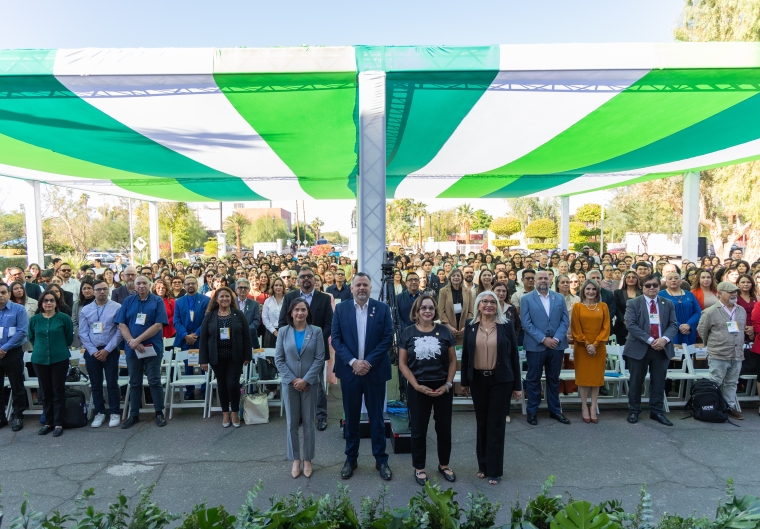 Open the image full screen.
Open the image full screen.
“Re:Border, at its core, is about diplomacy, relationships, collaboration, exchange of ideas, and innovations to make our already vibrant region even better,” said Cristina Alfaro, SDSU Associate Vice President of International Affairs.

